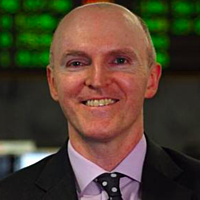AUD needs a fresh catalyst

Westpac Bank
Global markets remain skittish with a laundry list of reasons to worry – from the Italian budget, Fed tightening and rising US bond yields, Brexit and of course US-China trade tensions.
US equities remain volatile since their heavy plunge last week, and the technology sector remains at the epicentre.
Rising US interest rates could well be the underlying catalyst for this volatility, and we continue to argue that the return of US equity turbulence will not shake the Federal Reserve’s determination to raise interest rates in December, indeed well into 2019. Interest rate markets seem to agree, with pricing for the Fed funds rate in mid-2019 essentially unchanged despite the equity volatility.
Having avoided a break of 0.70 early this month, AUD/USD has been notably quiet, holding between 71 and 71.50 over the last week, its narrowest range since August and largely ignoring the equity swings, including a 4 year low for China’s stock market.
Domestically, we had the RBA minutes of their October board decisions and a speech from Deputy Governor Debelle, both which conveyed an upbeat assessment of the Australian economy, and repeating the RBA’s mantra of an improvement in economic conditions leading to a gradual increase in wages growth and, in turn, inflation.
However, this was subsequently overshadowed by the September Labour force data which showed a surprising 0.3 % fall in the unemployment rate to just 5%, the lowest in 6 years. 5% has historically been argued to be the level for the natural rate of unemployment in Australia, below which wages pressure starts to build. The participation rate declined to 65.4% from 65.7% which some argued as driving this improvement, however, on a holistic view, this was a solid update on the state of the labour market.
Next week, the local data calendar is sparse, but offshore we see US Q3 GDP and we’ll also be watching Bank of Canada with markets pricing a near-certain hike when they meet October 24th; as well as the ECB meeting as they approach the end of their Quantitative easing programme.
Now while the Australian economic data calendar may be quiet, local markets will be closely watching the results of the Wentworth by-election where the government could lose its parliamentary majority. Since the change of Prime minister on 24th August, Aussie dollar has been the weakest G10 currency, and while there are always other factors at play, it does seem a political premium is at play.
All up then, with Australia’s unemployment rate at a 6-year low of 5%; commodity prices holding up; GDP growing above 3% and business confidence and conditions above average, there remains a solid fundamental case for AUD/USD recovery.
But while markets remain concerned about US-China and trade tensions, even if the government retains its majority after the by-election, A$ probably needs a fresh catalyst to break above 0.72.

Sean Callow is Westpac Bank's Senior Currency Strategist, based in Sydney. Sean focuses on the Australian dollar and other G10 and Asian currencies. He has worked in strategy and economics roles in New York, London, Singapore and Melbourne.
Expertise

Sean Callow is Westpac Bank's Senior Currency Strategist, based in Sydney. Sean focuses on the Australian dollar and other G10 and Asian currencies. He has worked in strategy and economics roles in New York, London, Singapore and Melbourne.
